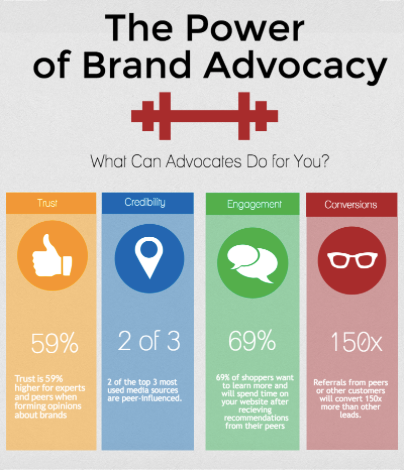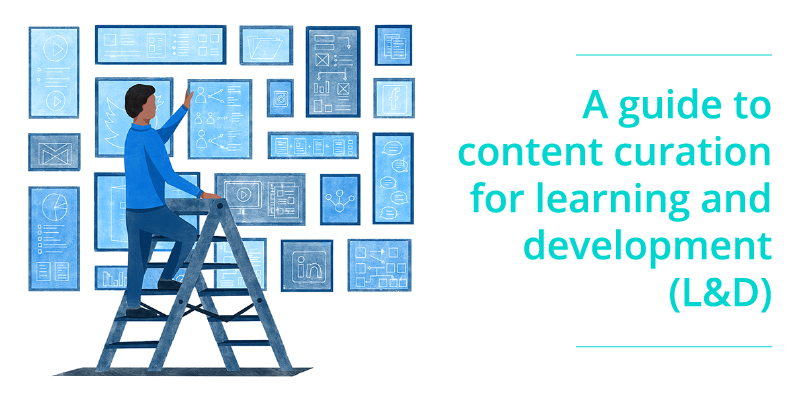
Scheduling is a key part of content marketing online. It is important to set realistic schedules for creating content, depending on the resources and budget you have available. Track the time it takes you to create each piece of content. Be sure to make your content easy to read and provide helpful tips. Listed below are some tips to help you schedule your content. A clear customer-centric vision is the key to any content marketing strategy.
Create a customer-centered content marketing strategy
An effective strategy to build customer-centric content is essential if you are planning on using content marketing for your online company. While this approach may be a little more time-consuming, it's also likely to get better results over time. Outsourcing is an option for those who are having trouble finding the time to produce content. Effective content can be created using seven steps. These steps will ensure better results.
First, determine your target audience. Once you have identified your target audience, it is time to figure out how to best serve their needs. What is their problem? What product does this person need? This is the foundation of your content marketing strategy. Remember that your content marketing strategy is about building long-term relationships with customers. This means that your content must be relevant to their needs.
Second, assess the success of your content. How many times have you shared your content? Did your customers engage with it? Is it being shared as expected? These are the metrics you need to track to determine whether your content strategy is working. Now you can tweak your content marketing strategy based on what interests your customers. Next, you need to measure the results. Do you know how many people shared your content on social media?
Identify your audience
Before you begin creating content, identify your audience. A marketing persona (or marketing persona) is a detailed description about your target audience. It can help you determine the type of content they will enjoy and find most valuable. It helps you define your audience according to their age and gender. Knowing your audience will enable you to target them with content and keep them coming back.
One of the best ways to identify your audience is to observe the people who buy your products or services. As you research your market, take a look at the popularity of similar products. Similar products are often sold by companies that know their customers well. This allows them to make their content relevant to your products and services. You can help them find you by using popular hashtags. Engage with your audience on social networks to ensure that they are aware of what you have to say.

Online marketing content can be based on demographic attributes. You can use demographic attributes to identify your target audience if you are selling sneakers. Your target audience could be male, female, or a combination of both. This information will enable you to target your marketing messages better and improve your company's performance. You can also examine the marketing strategies used by your competitors to identify their customers' buying habits.
Create a distribution plan
To get the most mileage out of your content, create a distribution plan. A distribution strategy identifies the channels your content will promote, and gives you insight into its effectiveness in reaching your goals. Once you have created a distribution plan, it's time to begin promoting your content. Here are some tips that will help you get started.
Identify your audience. Your content should be tailored to their stage of the buying funnel. Your content could be written for current customers if it focuses on informing them. Care content, however, will inform existing customers about new products or industry trends. The ultimate goal of your distribution plan would be to reach these customers.
There are many distribution options. For instance, you can use social media platforms to help spread your content faster. You can also use social media distribution tools like Hootsuite to maximize your efforts. Look into forums and online communities, and find ways to connect with them. It's also a good idea to use paid advertising and influencer marketing to increase your content's reach. In addition to these channels, consider other sources of online marketing.
Create user-generated Content
How can user-generated content be used in your online marketing strategy for users? It is common for customers to share their opinions. For instance, if your company sells portable solar panels you might ask your customers to comment on the product through a website. This allows your brand to get the real deal from its customers, while also decreasing the risk of offensive content spreading throughout the Internet.
The value of user-generated content in your online marketing campaign can't be understated. This content is valuable as it allows people to connect with you and the company. Users also enjoy sharing their opinions, and they can even help you get a brand new customer. By allowing your followers to give their opinions about products and services, you can save both time and money. This strategy can help your company get a high ranking on search engines and gain new customers.
User-generated content is an essential part of any successful marketing campaign. It's the secret ingredient in boosting your brand's online presence. You can use user generated content in many forms. These include testimonials, product videos, custom hashtags, social media contests, and even testimonials. User-generated content is free and can be used to improve your website's ranking and credibility.
SEO optimization: Optimize your content
Content marketing is about optimizing it for search engine optimization. Search engine crawlers, also known by web crawlers, are web crawlers that scan your website for content. Bingbot, and Google bot crawl your site. The bots collect information about your site and use it to rank it. If a search engine finds something that matches the topic of your webpage, it will display the website in search results.

SEO content is intended to boost search engine rankings and drive traffic to your website. The relevance of the content and the number of backlinks linking to your site are the main factors that determine organic search results. They also consider how trustworthy the source. Search engine optimized content must include keywords and be structured in a way that is easy to understand for the target audience. Follow these steps to boost your website's search engine ranking.
SEO requires the use of keywords. However, you should not stuff the content with keywords. Keyword stuffing is not de rigeur until 2021. It is best to include your primary keyword in the first 100 characters, and your secondary keywords as natural as possible. It's best not to include more than one primary keyword. You can also use a few secondary keywords which reflect the topic and search intent of your content. If you want to increase traffic to your website, you need to use as many secondary keywords as you can.
Social media is a great place to promote your content
You may choose to use different social networking sites for different types or content. Although linking to your content might have worked in the past it is no longer effective. Instead, you need to use a more strategic approach to promote your content. Timing is everything in social media. Research has shown that publishing at the beginning of the day on Instagram and Twitter is better than publishing later in an afternoon on LinkedIn and Facebook. However, there is no one "best" time for content to be published on these social media channels.
Social media platforms are often spontaneous. A content strategy is a way to produce consistent quality content. Monitor your analytics to ensure you are improving your content strategy. You must be active on social media because it is a real-time platform. This means posting frequently, keeping track of engagements, responding to comments and answers, and maintaining an accurate profile. Content must be easy to access on the device of your target audience.
When it comes to social media, you need to understand the audience and the channel. You should be authentic and appeal to the audience depending on who you are. You can be serious, playful, or somewhere in between. If you want to maximize the benefits of social media for your company, then you must know how to market it. Social media management tools can help you make it easier.
FAQ
How can I create a SEO strategy?
An effective SEO strategy starts with understanding your goals and how to get there. This allows you organize your content around those goals.
The second step is to start working on your keywords. You can gain insight into the keywords people use to search for certain words by doing keyword research. This information will allow you to write articles about these topics.
Your target keywords should be included in your articles once you have finished writing them. You can also optimize your articles by adding images and videos that are relevant. Link to related pages whenever you can.
After you have completed all of the content on your site, it is time to optimize that content!
How Can I Get Started With SEO?
SEO is possible in many ways. The first step is to identify the keywords that you'd like to rank for. This is known "keyword search." Next, optimize each page of your website for these keywords.
Optimizing a website involves adding keywords, descriptions, meta tags, unique page URLs, and linking with other websites. After optimization is complete, submit your website for search engines like Google Yahoo!, Bing, and Yahoo!
To see if you are succeeding or failing, you need to track your progress.
What is the average time it takes to see results from PPC advertising?
Paid searches take longer than organic results, because they have no natural flow. People expect to see the most relevant results when they search for something. Paid search results have to be more convincing to convince people to spend money on advertising on their site.
What is Onpage SEO?
On-page seo refers the actions that you take on your website to increase its rank in search engines. On-page SEO covers site architecture, page title, meta tags, image alt text and other aspects. Off-page optimization refers to any activities outside of your website that can improve its ranking. These activities include backlinks and social media shares.
What are the most effective tools for SEO on-page?
Video embeds (image alt tags), structured data markup, video and internal links are all great for on-page SEO. Learn more about these topics in this article.
How much does SEO cost?
SEO costs can vary depending on the company's size, industry, budget, and other factors. Smaller companies may only require a few hundred dollars per month, while larger companies will likely spend thousands per month. If you're unsure how much SEO will cost, you can use our free SEO calculator to estimate what it will cost.
What is an SEO marketing campaign?
The content of a website is an important part. If you don't have relevant and useful information on your site, you won't rank high enough for searches.
SEO campaigns are designed to optimize your site by obtaining backlinks from other websites. This includes social media optimization. It involves using Twitter, Facebook and LinkedIn to drive traffic and increase brand awareness.
These will increase traffic to your website, and your SEO rankings. SEO campaigns have a primary focus on building high-quality links back to your website so that Google recognizes that it is valuable.
Statistics
- 93%of online experiences today begin on search engines. (marketinginsidergroup.com)
- Which led to a 70.43% boost in search engine traffic compared to the old version of the post: (backlinko.com)
- And 90%+ of these backlinks cite a specific stat from my post: (backlinko.com)
- These guides are designed and coded 100% from scratch using WordPress. (backlinko.com)
- Sean isn't alone… Blogger James Pearson recently axed hundreds of blog posts from his site… and his organic traffic increased by 30%: (backlinko.com)
External Links
How To
How to choose the right SEO strategy for your business
These factors will help you decide which SEO strategy is right for your site.
-
Keyword Research
SEO is about ranking high for specific keywords. Negative keyword phrases that aren't relevant for your audience should also be identified. You might also consider long-tail keywords that are less competitive.
-
Content Strategy
Content marketing is important for all businesses. The challenge for eCommerce sites is to ensure that their products and/or services appear high in search engine results pages. This increases sales and improves conversion rates.
Creating relevant, engaging content that solves problems and provides solutions is key.
-
Link Building
Links are vital for ranking well on search engines.They help boost your page rankings and improve your website's credibility.However, building many links can dilute your Page Rank score. It is important to create valuable relationships with other sites.
-
Social Media Marketing
You may consider using social media channels to promote the brand. Share your material on these social media platforms to encourage others.
-
Website Structure
While it is true that good design does not necessarily lead to higher rankings, it can have an impact. A clear, simple layout can improve the user experience, which can lead to increased conversions. It is important that your site loads quickly in order to make sure users don’t leave the site without completing their transactions.
-
Mobile Optimization
Mobile devices account for almost half of internet usage today.If your website isn't optimized for mobile, you could lose out on traffic and potential clients.
-
Local Search
This refers to targeting local markets rather than national ones.Local SEO works by optimizing your website for local searches such as "restaurants near me" or "businesses in my area." It is easier to rank locally as people trust recommendations made by family members, friends, and coworkers.
-
Ecommerce Website Development
Ecommerce websites benefit from a range of different types of SEO strategies.For example, they often perform best when they're optimized for both desktop and mobile devices. They are also more likely to be ranked for long tail keywords.
-
Video Ranking
Video content performs well in search engines. It ranks highly for longer queries and receives more share.
-
Branding
Branding is the process of designing a logo, product names, and messaging that gives your company its own identity and personality. This helps customers know who you are and what your company does.
-
Analytics Software
Analytics software allows you to track how visitors interact with your website.The information gathered through analytics can help optimize your efforts and increase conversions.
-
Email List Management
Email lists allow you to send emails directly to your target audience.You can send messages about new products, special offers, and promotions.
-
Blogging
Blogging is another way to generate quality backlinks. You'll attract links from reputable sources when you write blog posts related to your business.
-
Customer Satisfaction
Customer satisfaction is one of the most effective ways to get high-quality backlinks.When satisfied customers refer their friends and colleagues to your site, this will result in quality backlinks.
-
Content Marketing
Content marketing involves producing unique, useful, relevant content that educates, entertains, or inspires readers.
Creating engaging content will help build trust with your target audience and lead to higher conversion rates.